Celebrating 70 Years of the Fender Stratocaster
Happy 70th Anniversary to the Fender Stratocaster: A Musical Icon’s Journey
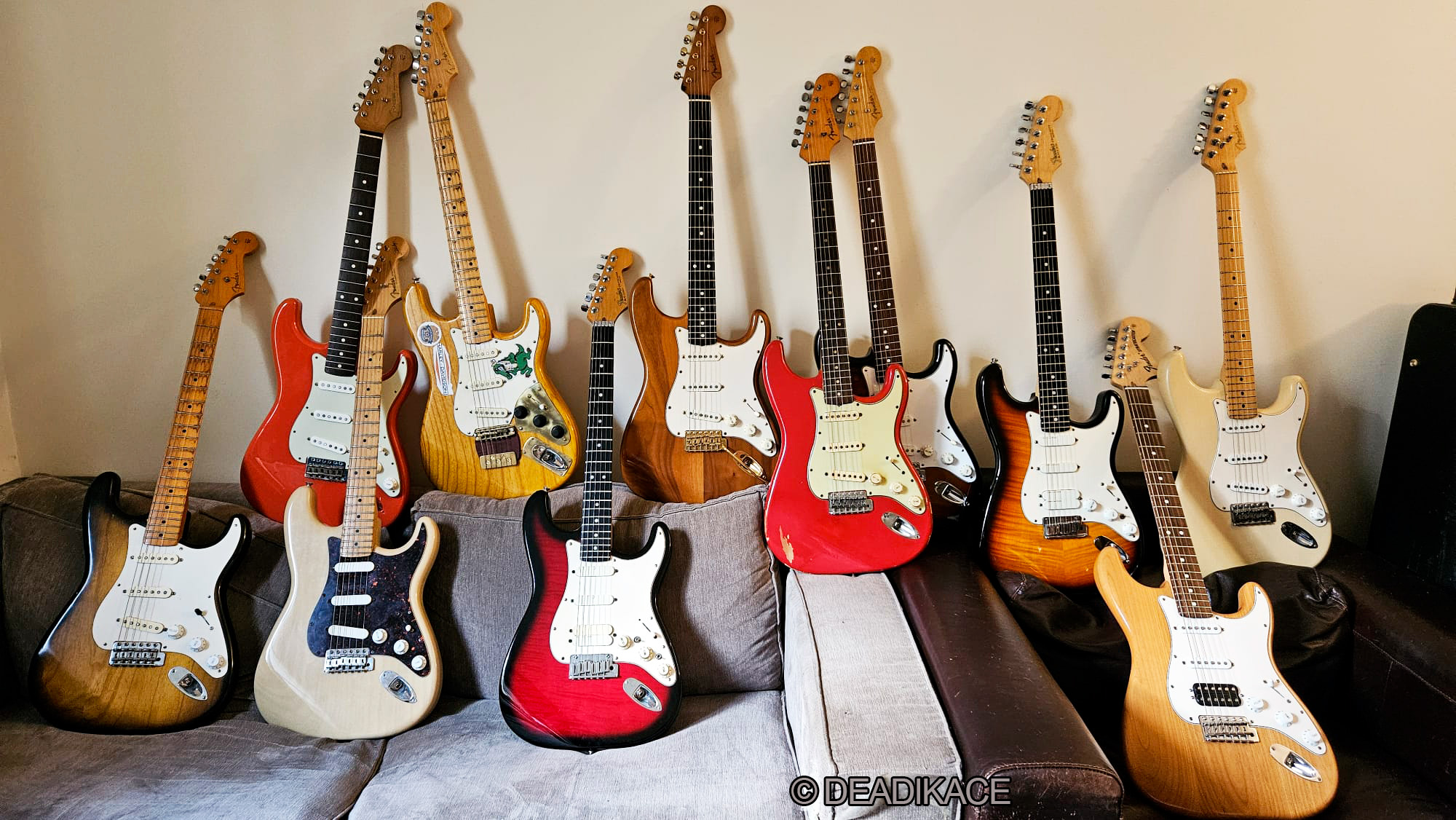
Today, we commemorate a milestone in musical history as we celebrate the 70th anniversary of the Fender Stratocaster, an instrument that has left an indelible mark on the world of rock and roll. When you first imagine the electric guitar, the shape of the Stratocaster is likely the first one that springs to mind.
It was on this day in 1954 that the first Stratocaster was introduced to the public, forever altering the landscape of music. Since its debut, the Strat has become synonymous with innovation, versatility, and unparalleled sound. Its sleek design, defined by a contoured, double-cutaway body, and distinctive sound produced by three single-coil pickups, have made it the guitar of choice for an illustrious lineup of legendary musicians.
From the transcendent performances of Jimi Hendrix to the soulful blues of Stevie Ray Vaughan, the Stratocaster has been wielded by virtuosos like Eric Clapton, Mark Knopfler, David Gilmour, Jerry Garcia, Rory Gallagher, and Ritchie Blackmore, shaping the sonic tapestry of rock music for generations.
However, the narrative surrounding the Fender Stratocaster transcends mere chronicles of legendary musicians and iconic performances. It unfolds as a testament to innovation, craftsmanship, and the enduring legacy of a guitar that has profoundly influenced millions of lives.
Here, delve into the complete journey of the iconic Fender Stratocaster, from its groundbreaking inception to its enduring impact on the world of music.
Beginnings of the Stratocaster:
In the early days of the Fender Musical Instruments Corporation, the production of electric guitars was limited. The company had already introduced groundbreaking instruments like the Telecaster, Esquire, and Precision Bass, but the Stratocaster was still in its infancy. According to Forrest White, who joined Fender in May 1954, the first production run of the Stratocaster didn’t occur until October of that year.
One of the key figures in the development of the Stratocaster was Bill Carson, who provided invaluable feedback during the design process. Carson recognized the limitations of existing guitar designs and suggested improvements to achieve proper intonation. His insight led to the innovative design of the Stratocaster’s bridge, which featured a separate bridge section for each string—a feature that set it apart from other guitars of the time.
Carson’s collaboration with Leo Fender and the Fender team exemplifies the spirit of innovation and dedication that fueled the creation of the Stratocaster. Their commitment to pushing the boundaries of guitar design ultimately resulted in the birth of an instrument that would change the course of music history.

Design and Development
Fender was small in the early 1950s, but clearly going places, and it’s possible that Leo Fender turned his attention in earnest to a new electric guitar model to succeed the Telecaster and compete with more upscale competitors as early as 1951. Work on elements such as new pickups and a new bridge was certainly well under way by late 1952. Leo and his closest staff spent long hours developing and perfecting the new model, which quickly shaped up to be its own instrument rather than an improved version of the Telecaster.
The Birth of the Stratocaster
The new guitar certainly owed several design elements to its predecessor, though, and as late as early 1953 its body shape closely resembled that of the Telecaster. In spring of that year, however, new arrival Freddy Tavares sketched out a new body shape that sleekly adapted Leo’s balanced two-horned shape for the Precision Bass.
The new guitar thus combined features of Fender’s first two instruments of the 1950s, and in another important development in early 1953, Fender sales chief Don Randall came up with a name for it: the Stratocaster.
Innovative Features
To compete with more high-end instruments from other manufacturers—particularly Gibson’s Les Paul, introduced in 1952 in response to what Randall once called the “plain Jane” Telecaster—the Stratocaster was a marked step up in design and innovation for Fender.
Beyond its revolutionary bridge, the Stratocaster boasted a contoured body, a departure from the Telecaster’s more angular design. This ergonomic feature enhanced comfort and playability, setting it apart from its predecessors and competitors.
The Stratocaster’s greatest innovation, however, was its bridge. In response to player feedback on the Telecaster, Randall wanted the new guitar to have some kind of vibrato system, and Leo was eager to better the designs by his former business partner, Doc Kauffman, and by his contemporary, Paul Bigsby.
Introduction to the Market
The Stratocaster was introduced in spring 1954 as Fender’s new top-line guitar, in tremolo and non-tremolo versions. The first known ad for it appeared in that April’s issue of International Musician magazine, and a small pre-production run began that month. It was a sleekly beautiful instrument bursting with great features and producing full, clear and sparkling tones. The first full-scale production run began in October 1954, with the vibrato model priced at $249.50 and the non-vibrato model at $229.50.
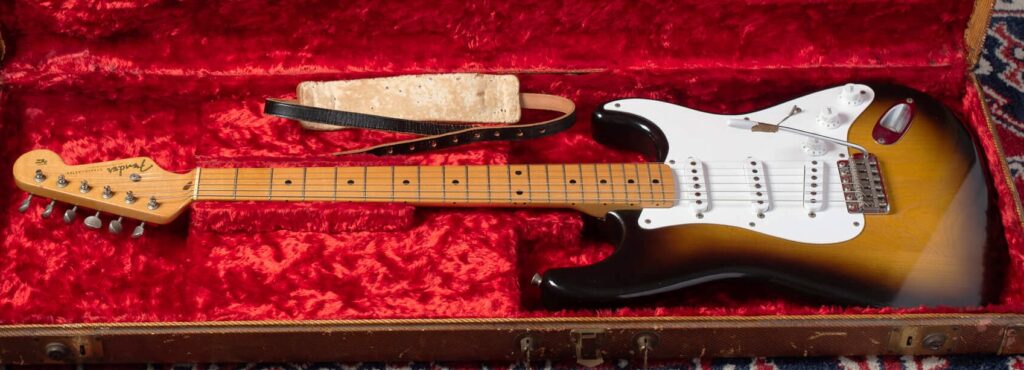
Initial Reception and Evolution
With its introduction serendipitously preceding the rising popularity of a new musical and cultural phenomenon called rock ‘n’ roll by about a year, you’d think the Stratocaster would’ve quickly rocketed to stratospheric heights of acclaim and popularity. It didn’t.
The Stratocaster got off to a rather slow start. Three years after its 1954 introduction, as Tom Wheeler notes in his introduction to The Stratocaster Chronicles, it was still “not particularly well known,” and appeared to be “as far removed from conventional guitars as, say, a baritone ukulele or even a banjo.”
Impact and Influence
In the context of the times, Wheeler continues, “Plenty of professional musicians saw the new Fender as unworthy of serious consideration—merely a tool, a gimmicky contraption, even a joke.” Such was the uphill climb the Stratocaster faced on its introduction; indeed, its ascent was long and gradual rather than immediate and meteoric.
Rock ‘n’ roll had been building steam since the late 1940s by the time it broke out into a national phenomenon in the mid 1950s, and during that initial period, with few exceptions, its main lead instruments were saxophone and piano rather than guitar.
Development and Popularity
And so the Stratocaster bided its time during its first few years—a period during which the saxophone and the piano slowly ceded their lead roles to electric guitar, which could with rapidly increasing prevalence be heard louder and clearer than ever before.
In the meantime, Fender put its new Stratocaster into the hands of the western swing and pop guitarists Leo intended it for—players such as Buddy Merrill (of Lawrence Welk’s band), Alvino Rey, Eddie Cletro, Charlie Aldrich, Al Myers, “Stash” Clements, Kenneth “Thumbs” Carllile, Charley Raye, and others.
Evolution of Design and Construction
During the Stratocaster’s formative years, Leo Fender and his team tirelessly refined its design and construction, ushering in a series of improvements that would shape its trajectory for decades to come.
By 1957, the Stratocaster had undergone significant enhancements, culminating in a form that would endure largely unchanged. Transitioning from ash to alder for the body material in mid-1956 marked a pivotal shift, enhancing affordability and workability without compromising quality.
Moreover, alterations to the neck profile showcased Fender’s commitment to innovation. The original rounded “C”-shaped profile evolved into sharper “V” and “medium V” profiles from 1955 to 1957, before reverting to rounded profiles by the decade’s end.
Notably, the introduction of rosewood fingerboards on the Jazzmaster in 1958, followed by their standardization on other Fender models in mid-1959, rendered traditional skunk stripes obsolete. These fingerboards, with truss rod channels routed into the front of the neck and covered by glued-on fingerboards, represented a significant departure from previous designs.
The year 1959 emerged as a landmark moment in the Stratocaster’s history, marked by the debut of modern features such as rosewood fingerboards and the iconic 3-Color Sunburst finish. With rosewood-fingerboard instruments devoid of skunk stripes becoming the standard at Fender throughout much of the 1960s, the company also offered a two-piece maple neck/maple fingerboard combination without skunk stripes as a special-order option during this period.
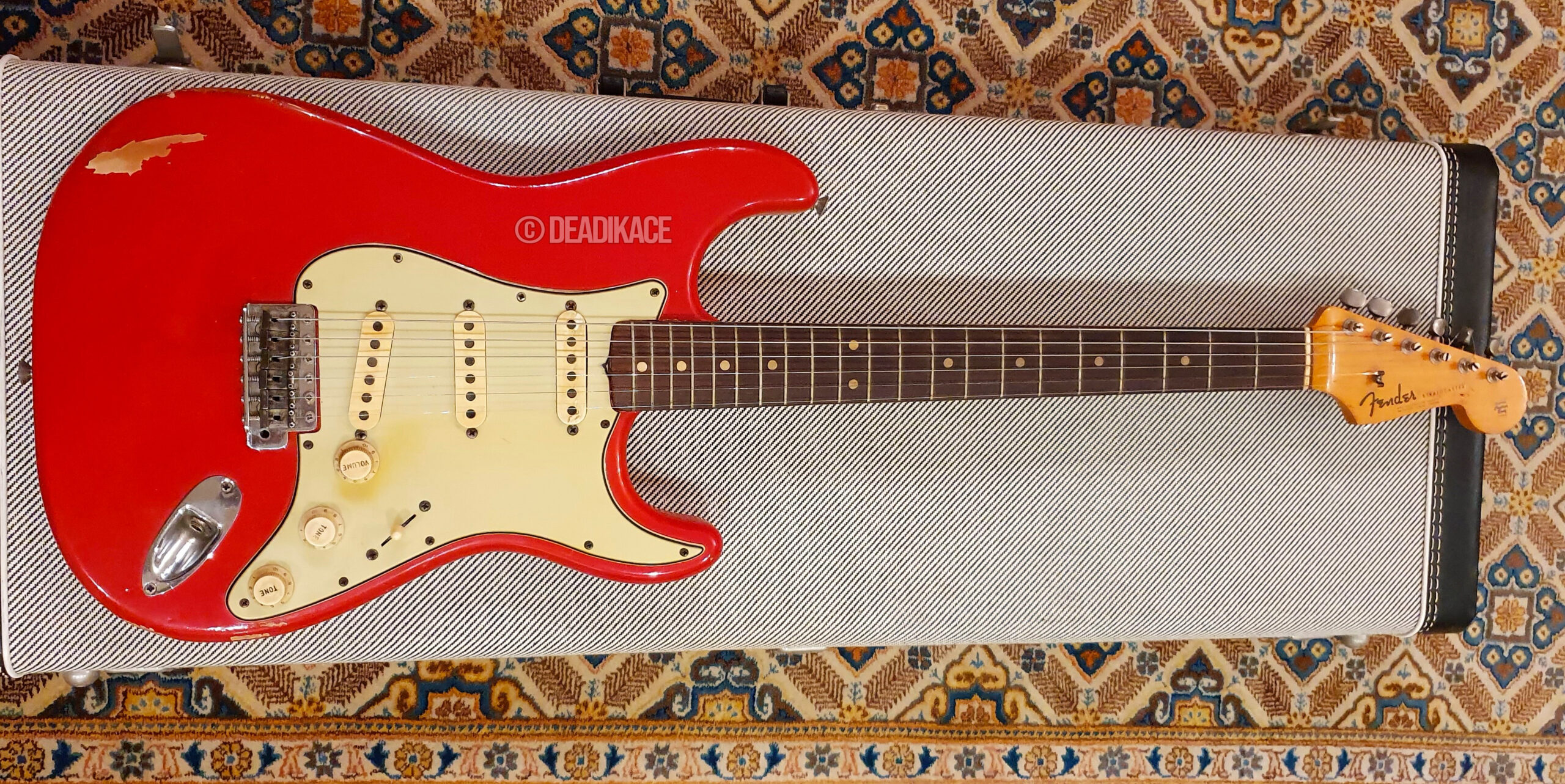
Pioneers and Popularizers
The Stratocaster had found its way into several acclaimed and influential hands by the time many of these design changes were implemented. Three years after its introduction, many still hadn’t seen one, but that changed when a Texas rock ‘n’ roll trio called the Crickets appeared on The Ed Sullivan Show on Sunday, Dec. 1, 1957.
They charged through two songs, “That’ll Be the Day” and “Peggy Sue,” penned by the group’s Stratocaster-wielding leader, a bespectacled 21-year-old singer/guitarist named Charles Hardin “Buddy” Holly.
Others embraced the Stratocaster later in the decade, too. Ike Turner championed the Stratocaster early on with dramatically swooping tremolo use that prefigured Jimi Hendrix by a decade.
Pee Wee Crayton, Ritchie Valens and Carl Perkins played Strats in the 1950s, as did Cliff Gallup’s successors in Gene Vincent and his Blue Caps, Johnny Meeks and Howard Reed. Near the end of 1959 in the U.K., a new generation of guitarists was taking their first formative steps, including Peter Townshend, Eric Clapton, Ritchie Blackmore, Jeff Beck, and David Gilmour.
Legacy and Evolution
The Stratocaster’s impact was felt far beyond its introduction. Its unintentional peculiarity of the Stratocaster’s electronics—the two “in-between” switch positions—became beloved tones for many acclaimed guitarists.
Fender closed out the Stratocaster’s debut decade with a handful of notable developments for the guitar. Its brief reign at the top of Fender’s two-instrument professional guitar lineup ended in 1958 when a third pro model, the Jazzmaster, was introduced. Design changes implemented in 1959 were significant enough for models introduced later that year to be considered the “second incarnation” of the Stratocaster.
Uncertain Future
At the dawn of the 1960s, elder brother the Telecaster was enjoying a new and hard-won sense of indispensability. Leo Fender had assumed that Telecaster players would replace their instruments with Stratocasters, but that turned out not to be so. And utterly unbeknownst to Fender, players had other plans entirely for the Jazzmaster.
But who knew where the Stratocaster was destined to fit in? Who knew if it had any kind of future ahead of it, let alone a bright one? The answers to those questions were far from clear. As sleek and innovative as it was, the Stratocaster’s future was by no means guaranteed in late 1959.
Emerging Talents
Meanwhile, kids on both sides of the Atlantic were taking their first formative steps as a new generation of guitarists yet to come of age. Near the end of 1959 in the U.K., these included three 14-year-olds—Peter Townshend, Eric Clapton and Ritchie Blackmore; a 15-year-old named Jeff Beck and a 13-year old named David Gilmour.
In the United States in late 1959, a flamboyantly talented 23-year-old Louisiana guitarist named George “Buddy” Guy had just got his first record contract the year before, and 22-year-old Californian Richard Monsour, who went by the stage name Dick Dale, had just released his first two singles on the tiny Deltone label.
Two small children in Dallas, 8-year-old Jimmie Vaughan and his 5-year-old brother Stephen Ray Vaughan, or “Stevie,” were barely big enough to get their hands around a guitar neck. And in Seattle, a kid named James Marshall Hendrix—“Jimi” to family and friends—turned 17 that November.
He’d just gotten his first guitar the year before, an acoustic that cost all of $5, and although he practiced constantly, he longed for an electric guitar. His father relented in mid 1959 and bought him a white Supro Ozark 1560S electric.
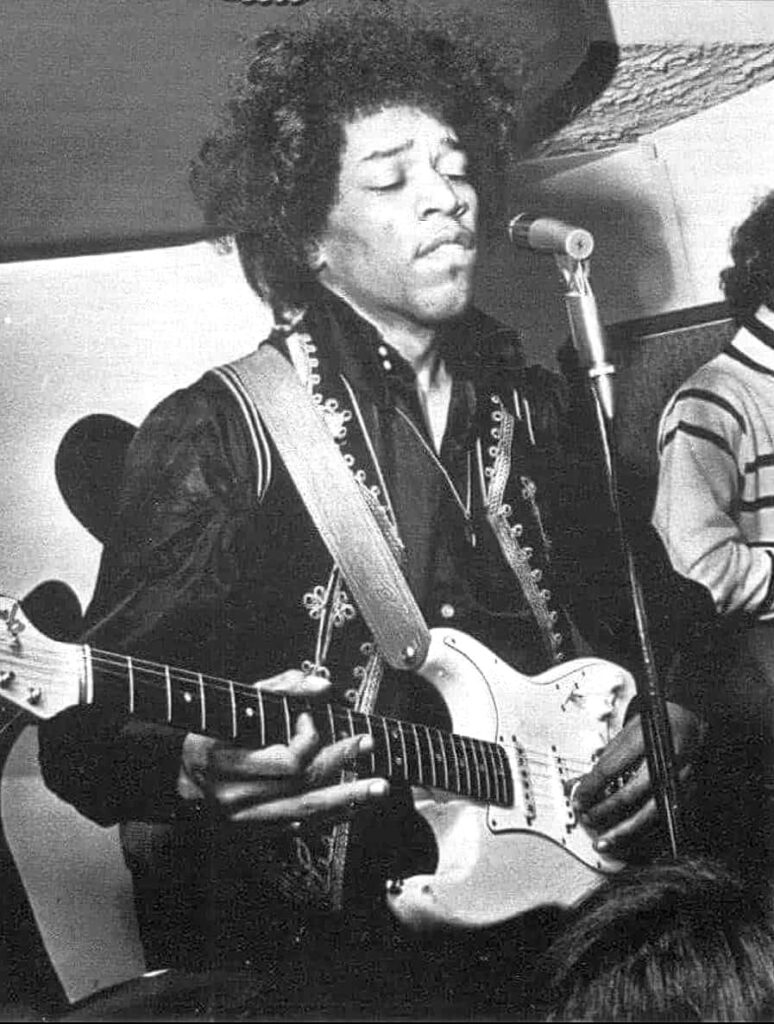
A Legendary Journey: 70 Years of the Fender Stratocaster
Fender Stratocaster stands as a testament to the power of innovation and creativity in the world of music. For seven decades, it has been the instrument of choice for countless musicians, from aspiring beginners to seasoned professionals.
As we reflect on its remarkable history and legacy, we are reminded of the enduring impact of Leo Fender’s vision and the countless individuals who have contributed to the Stratocaster’s journey.
To celebrate its 70th anniversary, the Fender Custom Shop introduced a limited-edition collection, meticulously crafted to honor the storied heritage and enduring legacy of this extraordinary instrument. Explore further details about these exclusive guitars here.
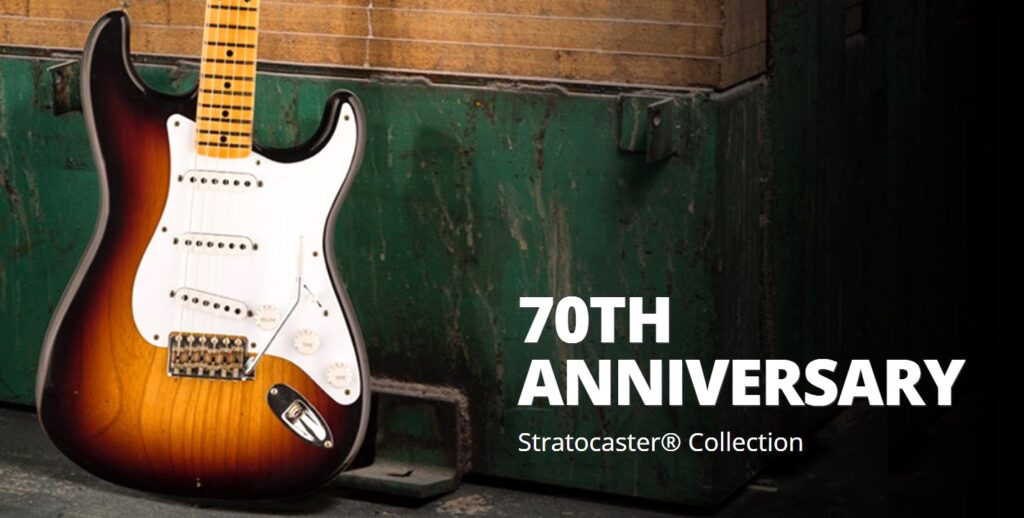
Here’s to 70 years of the Fender Stratocaster—and many more to come.
Recommended for you
- Why Ringo Starr Evicted Jimi Hendrix from His Apartment
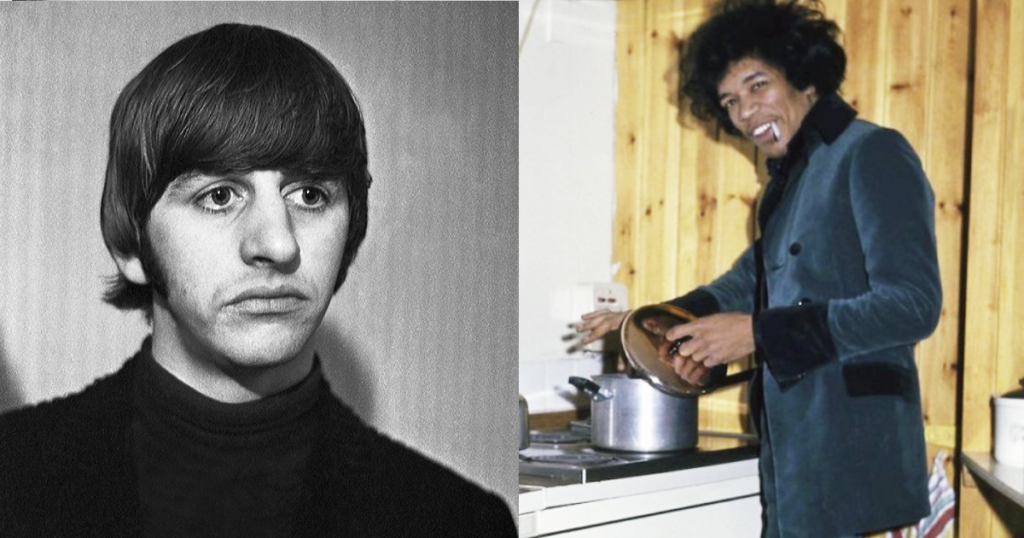
- When John Lennon Sued the U.S. Government for Wiretapping Him

- Top 10 Reasons To Own Many Guitars
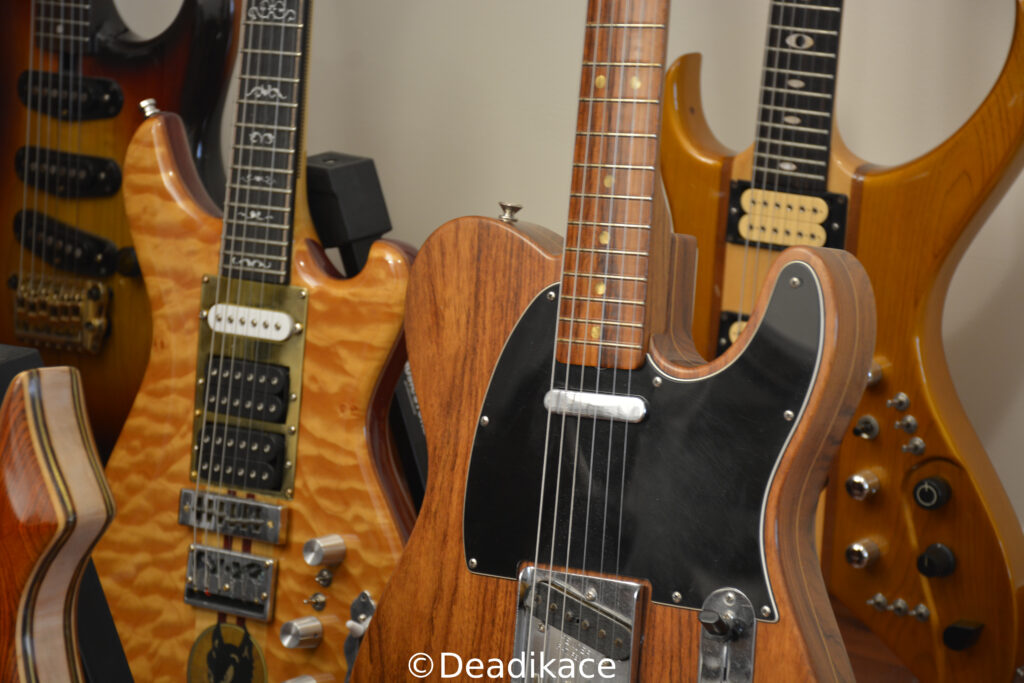
- The Day an Intruder Cooked Pizza at George Harrison’s Home

- Remembering Lynyrd Skynyrd ’s Horrific 1977 Plane Crash

- On this day in 1987, Tom Petty’s House Went Up in Flames

Read more Trending News Here